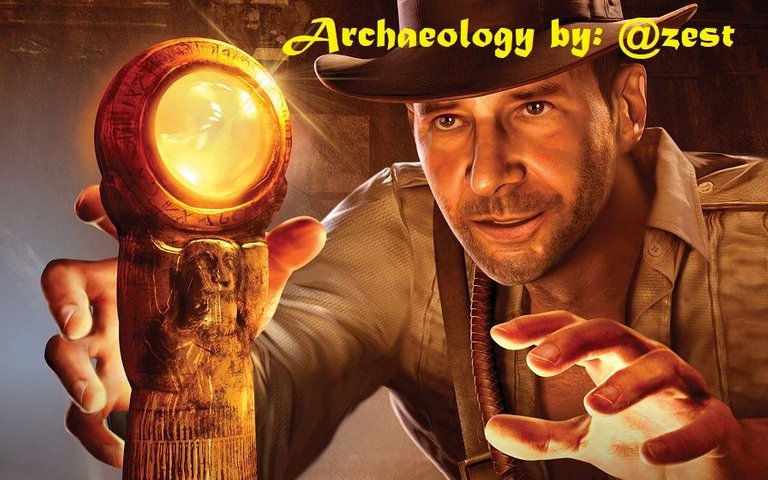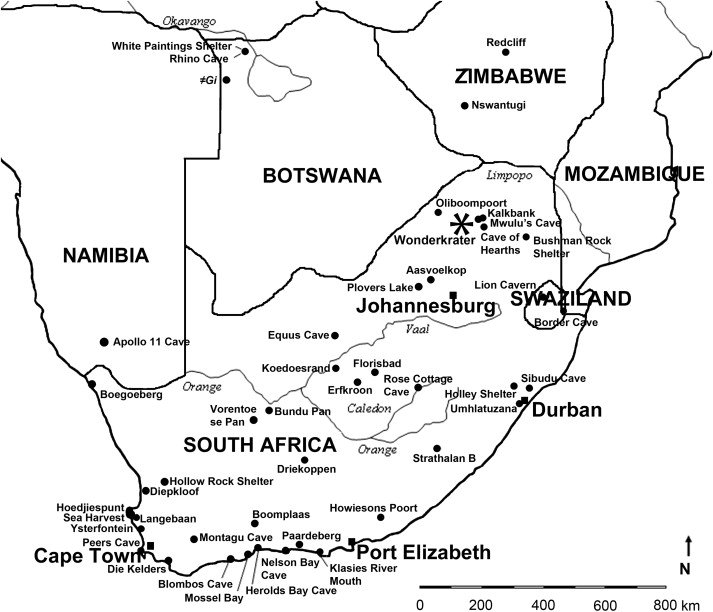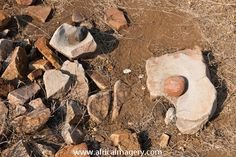
Dear Reader
In this following series of posts we are covering the The Early Iron Age of South Africa, I highly encourage you to please read the Introduction, The Origins of the Early Iron Age Complex, The spread of the Early Iron Age Complex to southern Africa and Some important Early Iron Age sites posts to this series to bring you update to date with the information and terminology we have covered so far.
The Early Iron Age of South Africa:Settlement pattern and subsistence practices
Settlement pattern and subsistence practices
We have already touched upon certain aspects of the way of life of the Early Iron Age inhabitants in our discussion of the sites. In this post, only some of the main features of the settlement pattern and the subsistence practices will be described.
A reconstruction of the settlement pattern of the earliest farmers in the region of St Lucia Lake on the KwaZulu-Natal coast has revealed that they preferred the area between the lake and the coast. Sites from this pioneer phase, dating back to the 3rd and 4th centuries AD, were all limited in extent and situated east of the Great Escarpment. (Hall 1987:36-38; Maggs 1984:340). Well-known KwaZulu-Natal sites associated with this phase include Mzonjani, 15km north of Durban, and Enkwazini, near Lake St Lucia. These sites were about two hectares in extent, and most lay within three kilometres from the coastline. Clearence of the coastal forest provided the early farming communities with rich agricultural land. There is no evidence that these pioneer farmers of KwaZulu-Natal kept livestock and it would seem that they largely depended on shellfish to supplement the protein content of their diet (Hall 1987:37). These communities also hunted wild animals and collected edible veld fruits.
It has been suggested that the way of life of these Early Iron Age pioneers did not differ drastically from that of local Stone Age hunter-gatherers. However, some Early Iron Age sites in the Kruger National Park, which have provisionally been assigned to the eastern stream Matola phase, have yielded remains of domestic animals such as cattle and sheep (Plug 1989). Although no vegetal remains were recovered from the KwaZulu-Natal sites, the excavated pottery vessels indicate storage of agricultural products. At Silver Leaves near Tzaneen, seed impressions of a millet species (Pennisetum glaucum) were discovered.
Early Iron Age settlements after c AD 500 were considerably larger, some up to 20 hectares in extent. Preference was given to the deep, fertile soils in the valleys of major rivers since these were very suitable for the cultivation of crops and also provided sweet grazing for livestock (Maggs 1984:342). As we indicated in the discussion of the KwaZulu-Natal sites, Early Iron Age communities preferred areas below the 1000 m contour. In addition, all sites were located within the summer rainfall area and there is no evidence that the high-altitude grasslands of the highveld were settled during the Early Iron Age. Ndondondwane in the Thukela river valley and sites in the Lydenburg valley form part of this phase. Archaeological remains from sites of this later phase indicate that agriculture and animal husbandry were practised.
The settlement layout reflects a "central cattle pattern", according to which stock enclosures were located in the centre, surrounded by dwelling huts consisting of pole-and-dagha structures. Pits, about 1.0 to 2.5m deep and containing domestic debris, are often found in the centre of the settlement complex as well. Some pits may originally have been dug for the storage of grain before being used for refuse.This pattern applies to eastern stream sites of this phase also, if Huffman's reclassification is accepted.
The "central cattle pattern" is more prominent at western stream sites (eg at Ndondondwane on the Thukela River and KwaGandaganda in the Mngeni River Valley). Cattle constitute the greater part of the faunal remains retrieved from Schroda, a 9th century site just to the south of the Limpopo River (this site has been assigned to the central stream). The central cattle enclosure can be easily distinguished owing to the presence of a thick vitrified dung deposit.
According to Huffman (1989a) the available evidence suggests that cattle were highly prized by the earliest Chifumbaze complex who settled in South Africa. Martin Hall (1988), on the other hand argues that cattle only attained their economic importance by the end of the first millennium AD. It would seem that sheep and goats were initially more numerous than cattle (Hall 1987:43) and that grain production constituted the basis of the economy of the early farming communities of South Africa.
Grains such as cowpeas, ground beans, sorghum and millet were cultivated. Early Iron Age grinding-stones do not have the broad and flat surfaces of the Late Iron Age grinding-stones, but contain deeper and more lenticular grooves. A possible explanation for this, according to Maggs (1984), is that small-grained millets were the predominant grain crops cultivated during the Early Iron Age. Crops such as sorghum, cowpeas and millet were cultivated by means of a system known as slash-and-burn cultivation. According to this system, also known as swidden agriculture or shifting cultivation, fields were cleared by cutting and burning down trees and bushes, a process which was repeated after a few years.
Traces of iron working are found on most Early Iron Age sites, but no reconstructible furnace has as yet been excavated. Iron production was on a small scale, and probably aimed at satisfying local needs. Copper was also worked, mainly for manufacturing ornaments such as bangles and beads. Other crafts include salt-making and the working of soapstone and ivory. The presence of imported glass beads and marine shells on inland sites testifies to trading activities. The available evidence suggests that enough iron was smelted on Early Iron Ages sites to satisfy the needs of the inhabitants.
The presence of marine shells and glass beads on sites in the interior points to trade links with the East Coast. This is confirmed by excavations at Chibuene, an early trading site on the southern coast of Mozambique which was established by the end of the 8th or the beginnimg of the 9th century AD. The general impression is, however, that trading was limited in extent and that Early Iron Age settlements were largely self-sufficient economic units .
This post concludes this series.
Images are linked to their sources in their description and references are stated within the text.
Thank you for reading
Thank you @foundation for this amazing SteemSTEM gif







I definitely lack the words to describe how good your posts are, what quality on all levels! Thank you so very much, for the education, quality of course, brilliant graph and continuous dedication to a series worth more than words can say, again!!!
Namaste :)
Namaste @eric-boucher.
I would firstly like to apologise for the delay in responding.
I have been thinking of an appropriate response to your truly amazing comment, but unfortunately, I have to admit that I also definitely lack the words to describe how heartfelt your comment is to me.
I am truly appreciative of you for your support and truly amazing comments:)
Namaste:)
In our case, I am very glad to read this as, by all accounts, we are understanding each other in perfect reciprocity. Much blessings to both of us then and my heart is rejoicing in a celebratory dance!
Namaste :)
Indian?
Not in this lifetime... ;) Namaste :)
Namaste! My friend. :)
I didn't know there were such sites in Kruger? Are they open to public (I may go back there next December)?
So, you are stating, if I got it right, that not a single big iron device has been found at all in the entire region?
Hey @lemouth!!!!
As many tourists to South Africa are more focused on the wildlife, unfortunately, a lot of the archaeological sites and finds go overlooked, if you do consider returning I will recommend some of the sites that would be of interest.
All archaeological sites in South Africa are opened to the public unless it under excavation or preservation.
Regarding "single big iron device" during the Early Iron Age there is presence of iron workings in the form of spearheads and arrow tips as we will see in the Later Iron Age series of posts the development of most sophisticated ironware
Thank you sincerely for the comment and support:)
It depends whether the conference organizers re-invite me :p
I think I must have missed the posts where you discussed the big devices... Do you have the links somewhere, by any chance?
Hi @lemouth:)
Apologises for the delay in responding.
I have not started discussing the Late Iron Age in South Africa as yet but I will be starting that series of posts soon:)
They would be crazy not to invite you:)
There are many good physicists around the globe, you know. I am not the only one ;)
important article thanks
Thank you:)
Very extensive and very interesting, jejejej !!
@laylahsophia thanks for showing/ resteeming this great article!
Finally somebody writes more about African culture! Also resteemed! Rare and great! Thanks for it! I am down with my Voting power. Upvote when powered up! Hugs out to ya fellaz! Steem on!
Continue the good work!!!
Namaste :)